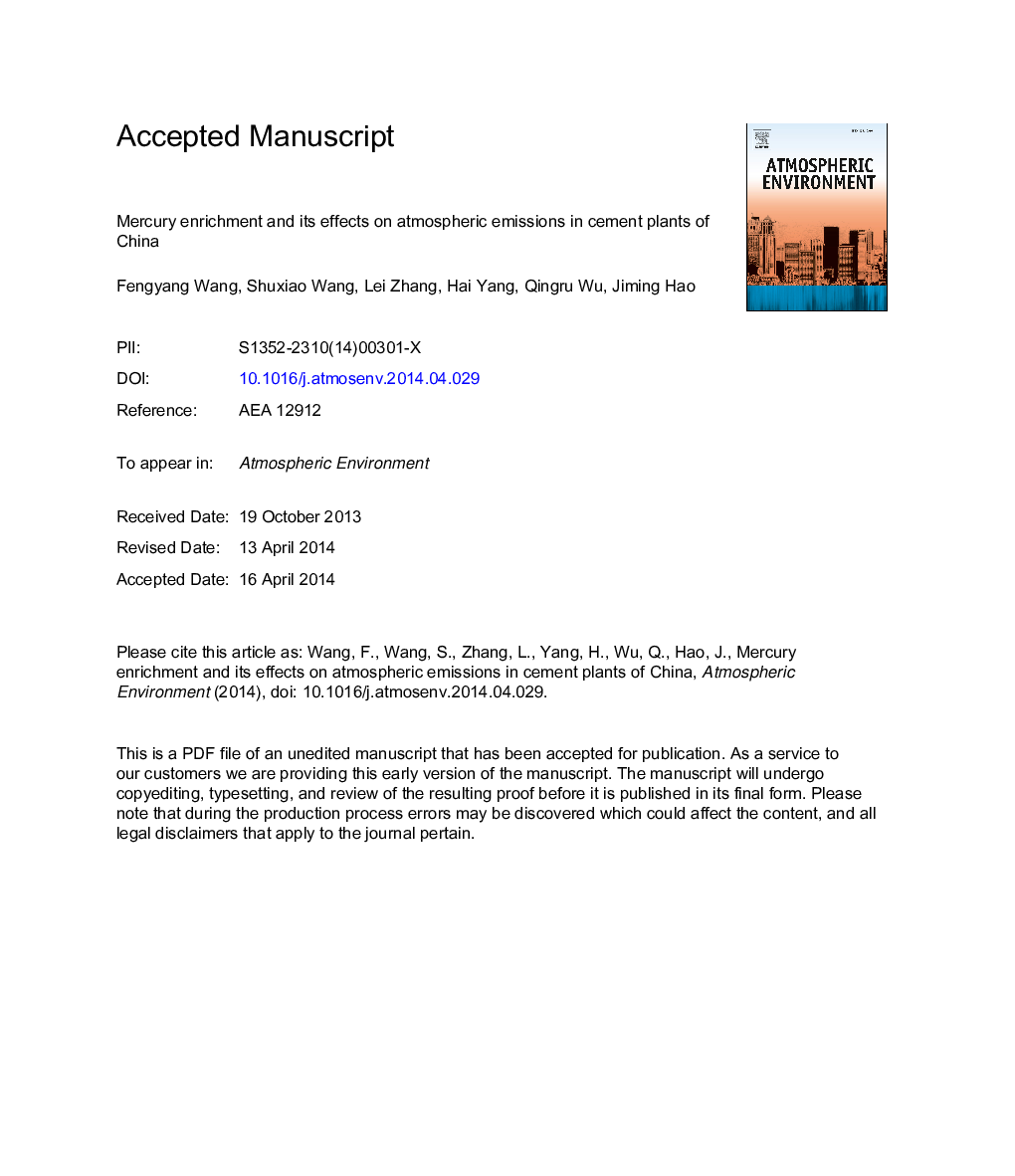| Article ID | Journal | Published Year | Pages | File Type |
|---|---|---|---|---|
| 6339397 | Atmospheric Environment | 2014 | 25 Pages |
Abstract
The cement industry is one of the most significant anthropogenic sources of atmospheric mercury emissions worldwide. In this study of three typical Chinese cement plants, mercury in kiln flue gas was sampled using the Ontario Hydro Method (OHM), and solid samples were analyzed. Particulate matter recycling, preheating of raw materials, and the use of coal and flue gas desulfurization derived gypsum contributed to emissions of Hg in the air and to accumulation in cement. Over 90% of the mercury input was emitted into the atmosphere. Mercury emission factors were 0.044-0.072Â g/t clinker for the test plants. The major species emitted into the atmosphere from cement plants is oxidized mercury, accounting for 61%-91% of the total mercury in flue gas. The results of this study help improve the accuracy of the mercury emission inventory in China and provide useful information for developing mercury controls.
Related Topics
Physical Sciences and Engineering
Earth and Planetary Sciences
Atmospheric Science
Authors
Fengyang Wang, Shuxiao Wang, Lei Zhang, Hai Yang, Qingru Wu, Jiming Hao,
